UPSC Daily Current Affairs: 13th October 2024 | Current Affairs & Hindu Analysis: Daily, Weekly & Monthly PDF Download
GS3/Science and Technology
How Technology is Reshaping Protein Studies
Source: The Hindu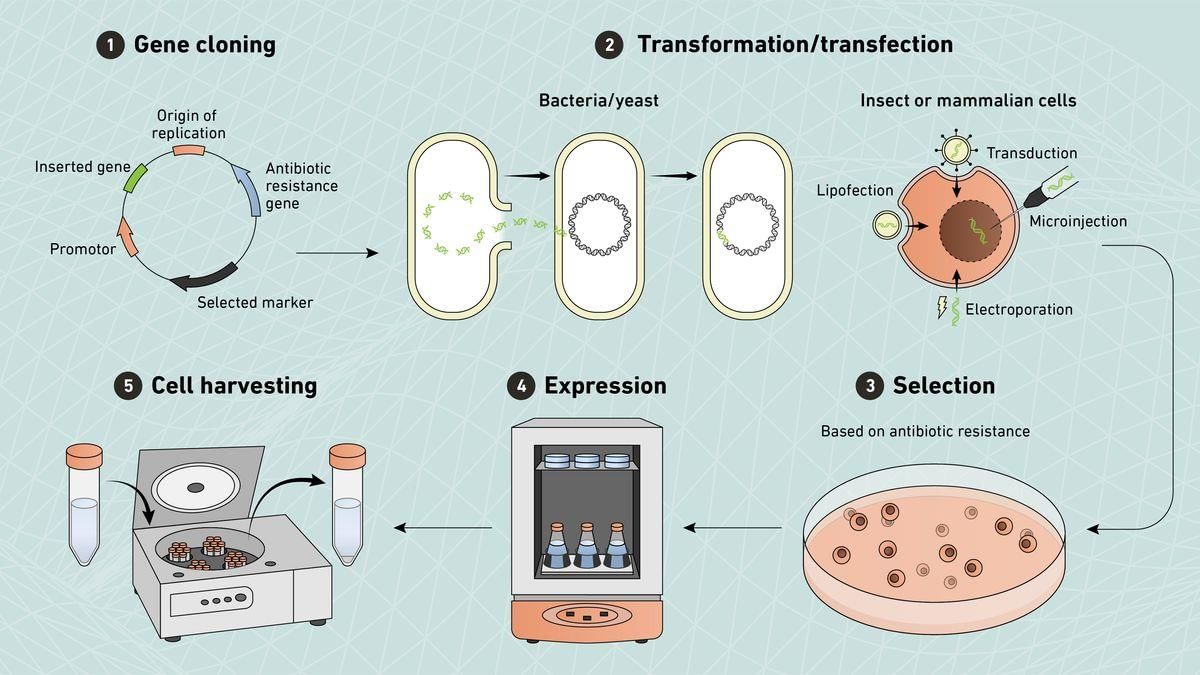
Why in news?
The 2024 Nobel Prize in Chemistry was jointly awarded to David Baker, Demis Hassabis, and John Jumper for their groundbreaking contributions to protein studies. Their work has significantly advanced our understanding of protein structure prediction and protein design.
About Protein:
- Importance: Proteins are essential for all known forms of life, consisting of only 20 amino acids that make up all proteins in humans and most life forms.
- Functions of Proteins:
- Provide structural support to tissues.
- Act as catalysts in biochemical reactions.
- Facilitate the transport of molecules across biological membranes.
- Control muscle contractions, aiding movement and heartbeat.
- Enable cell communication, allowing cells to operate cohesively.
The Protein-Folding Pattern:
- Proteins assume various roles depending on their 3D structures, which are determined by amino acid arrangements.
- The 'protein-folding problem' refers to the challenge of understanding how proteins fold into their specific shapes swiftly.
- Historical Context:
- In 1962, John Kendrew and Max Perutz were awarded the Nobel Prize for elucidating the first 3D structures of proteins like hemoglobin using X-ray crystallography.
- By 1969, it was discovered that proteins have an innate ability to rapidly fold into their correct shapes, demonstrating the complexity of the folding process.
- By the late 2010s, scientists had mapped around 170,000 protein structures, out of an estimated 200 million in nature.
AlphaFold - Revolutionizing Protein Structure Prediction:
- Developed by Demis Hassabis, co-founder of DeepMind, AlphaFold is a deep-learning model that predicts protein structures with remarkable precision.
- Key Developments:
- AlphaFold 1 (2018): Marked a significant advancement in predicting protein structures.
- AlphaFold 2 (2020): Achieved accuracy comparable to traditional methods for determining protein structures.
- AlphaFold 3: Led by Jumper, this version predicts protein structures and their interactions with other proteins or molecules.
- AlphaFold enables scientists to predict the structure of most proteins within hours, greatly speeding up research efforts.
- However, while it can predict protein folding, it doesn't yet explain the reasons behind a protein's preferred structure, necessitating human analysis for interpretation.
Real World Applications of Protein Design:
- The ability to design proteins has significant implications across various fields, including:
- Medicine: Baker’s team developed an antiviral nasal spray targeting the spike protein of COVID-19 in 2022.
- Chemistry: New enzymes have been designed for crucial chemical reactions, including those for producing atorvastatin (a cholesterol-lowering medication) and vitamin B6.
- Biosensors: Researchers are exploring protein designs for biosensors that monitor health metrics, such as blood glucose levels for diabetics.
Conclusion:
- The contributions of Baker, Hassabis, and Jumper have profoundly transformed protein science.
- Advancements in computational tools, including AlphaFold, have revolutionized how scientists predict and design protein structures, paving the way for innovative treatments, drugs, and diagnostic tools.
- These developments offer a glimpse into a future where artificial intelligence continues to reshape the fields of biology and medicine.
GS3/Defence & Security
T-90 Bhishma Tank
Source: Hindustan Times

Why in News?
In a significant advancement towards achieving self-sufficiency, the Indian Army has unveiled its first upgraded T-90 Bhishma tank, which bolsters its combat readiness.
About T-90 Bhishma Tank:
- The T-90 Bhishma has been the primary battle tank of the Indian Army since 2003.
- Renowned for its formidable firepower, agility, and protective features, the recent overhaul has amplified the tank's lethality and effectiveness.
- This tank is operated by a three-member crew consisting of a commander, a gunner, and a driver, who collaborate closely to identify and neutralize threats.
Features
- It is armed with a 125 mm smoothbore gun capable of firing a variety of projectiles.
- An anti-aircraft gun installed on top allows it to engage aerial targets within a range of two kilometers, with the capacity to fire up to 800 rounds per minute.
- Its compact design enables rapid maneuverability through diverse terrains such as forests, mountains, and marshlands, reaching speeds of up to 60 kilometers per hour.
- Equipped with an advanced thermal sighting system, the T-90 can detect targets from distances of up to 8 kilometers (5 miles), operational both day and night.
GS2/International Relations
Call for Review of the India-ASEAN Trade Deal
Source: Indian Express
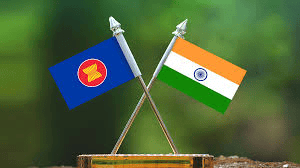
Why in News?
A review of the India-ASEAN trade deal by 2025 is part of Prime Minister Narendra Modi’s ten-point strategy presented at the 21st ASEAN-India Summit. This review is prompted by concerns regarding the increasing trade imbalance that favors ASEAN and the rise of Chinese investments in the region.
About
- AIFTA is a free trade agreement between India and the ten member nations of the Association of Southeast Asian Nations (ASEAN).
- The agreement aims to boost economic cooperation by providing tariff reductions on goods exchanged between India and ASEAN countries.
- It abolishes tariffs on 75% of goods traded between the regions and commits to lowering tariffs on an additional 10% of product lines to below 5%.
- AIFTA fosters economic collaboration in sectors including:
- Agriculture, fisheries, and forestry
- Services
- Mining and energy
- Science and technology
- Transport and infrastructure
- Manufacturing
Agreements
- The AIFTA encompasses:
- The ASEAN-India Trade in Goods (AITIG) Agreement, signed in 2009 and enacted in 2010
- The ASEAN-India Framework Agreement on Comprehensive Economic Cooperation, signed in 2003
- The India-ASEAN Agreement on Services and Investment, signed in 2014 and implemented in 2015
Performance
- ASEAN is a key trading partner for India, contributing to 11% of its global trade, with bilateral trade amounting to US$ 122.67 billion during 2023-24.
- Post-signing of the ASEAN-India Trade in Goods Agreement (AITIGA), India's trade with ASEAN saw remarkable growth.
- However, this trade disproportionately benefits the ASEAN region.
- From FY 2009 to FY 2023, imports from ASEAN to India surged by 234.4%, while India's exports only increased by 130.4%.
- This imbalance led to India's trade deficit escalating from US$ 7.5 billion annually at the agreement's inception in 2011 to around US$ 44 billion in 2023.
Why is India asking for a review of the India-ASEAN trade deal?
- The current agreement is perceived as unbalanced.
- India seeks to reassess AIFTA due to the following issues:
- Non-reciprocal concessions
- Non-tariff barriers
- Concerns regarding the exploitation of rules of origin, enabling other nations, particularly China, to route exports to India via ASEAN countries, which undermines local manufacturing in India.
India as a global manufacturing hub
- Adjusting tariffs is deemed necessary to safeguard emerging sectors within India's economy, aligning with the “Make in India” initiative aimed at establishing India as a global manufacturing center.
- For example, increasing tariffs on mobile phone components and automobile parts could encourage domestic production and lessen reliance on imports.
Asymmetry in negotiation power
- In the realm of goods trade, India removed import duties on approximately 74% of tariff lines and lowered duties on an additional 14% of tariff lines, presenting a consolidated offer to ASEAN.
- Conversely, each ASEAN member offered separate concessions to India.
- This disparity in negotiation power limits India’s ability to shield vulnerable domestic industries from competitive imports from ASEAN.
- The tariff advantages enjoyed by ASEAN countries in the Indian market under AITIGA significantly surpass those that Indian firms receive in ASEAN markets.
Rerouting concerns
- The increasing influx of Chinese investments and goods into ASEAN raises alarms about the rerouting of Chinese products into India via the region.
- In response, India's Ministry of Commerce and Industry initiated an anti-dumping investigation into steel imports from Vietnam.
- The Economic Survey indicated that Chinese firms are increasingly redirecting supply chains through nations such as Mexico and Vietnam.
Need for modernization
- AIFTA is considered outdated and requires updates to align with current market conditions.
- The two parties agreed to commence a review during the 16th ASEAN-India Economic Ministers Meeting (AIEMM) in September 2019.
- However, it took three years to merely agree on the scope of the review during the 19th AIEMM in September 2022.
GS3/Environment
Water Chestnut
Source: Health
 Why in News?
Why in News?
Water chestnut, a grass-like sedge flourishing in Wular Lake, experiences a surge in demand during autumn in Kashmir.
About Water Chestnut:
- Commonly referred to as goer in Kashmir, this aquatic vegetable thrives in Wular Lake.
- In India, it is popularly known as Singhara ka atta and grows submerged in water.
- The plants are equipped with sharp spines featuring barbs that can inflict serious injuries when stepped on.
- Native to Europe, Asia, and Africa, it is also recognized as water caltrops.
- Water chestnuts are rich in potassium and fiber, while being low in sodium and fat but high in carbohydrates.
How it is used?
- The edible kernel, hidden beneath a tough outer shell, is extracted, dried, and ground into flour.
- The sturdy dried outer shells are utilized as fuel in traditional fire pots known as kangri during the winter months.
- During Navaratri, water chestnuts are incorporated into various dishes, appreciated for being easily digestible and providing energy essential for fasting.
- Upon peeling, the chestnut reveals a white inner flesh characterized by a crunchy, juicy texture and a subtly sweet flavor.
- In recent years, adverse factors like dry weather and expanding marshland around the lake have led to a decrease in water chestnut production, negatively impacting local livelihoods.
GS1/Indian Society
India has eliminated Trachoma as a public health problem
Source: The Hindu
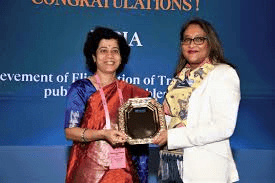
Why in news?
The World Health Organization (WHO) has announced that the Government of India has successfully eliminated Trachoma as a public health problem. This achievement makes India the third country in the South-East Asia Region to reach this significant milestone.
About
Trachoma is recognized as the leading infectious cause of blindness worldwide. It is caused by the bacterium Chlamydia trachomatis and spreads through direct or indirect contact with discharges from the eyes or nose, particularly affecting young children. In areas where the disease is endemic, as many as 90% of preschool-aged children can be infected, with the infection rates declining as children grow older.
Symptoms
- Repeated infections can lead to scarring inside the eyelid, causing the eyelashes to rub against the eye (a condition known as trachomatous trichiasis). This results in pain, corneal scarring, and ultimately, blindness.
- Women are more vulnerable due to their frequent contact with infected children.
Transmission factors and prevalence
- Factors contributing to transmission include poor hygiene, overcrowded living conditions, and limited access to clean water and sanitation facilities.
- WHO classifies Trachoma as a neglected tropical disease, estimating that around 150 million people globally are affected, with 6 million at risk of severe visual impairment or blindness.
- The disease is prevalent in rural areas of Africa, Asia, Central and South America, and the Middle East, with Africa being the most severely impacted region.
Efforts to eliminate trachoma
Global efforts to eradicate trachoma are coordinated through WHO’s SAFE strategy, which encompasses:
- Surgery for trichiasis.
- Mass treatment with antibiotics such as azithromycin.
- Promoting facial cleanliness.
- Improving environmental factors, including better access to water and sanitation.
Since the adoption of the SAFE strategy in 1993 and the launch of the WHO Alliance for Global Elimination of Trachoma in 1996, the World Health Assembly has established 2030 as the target date for the global elimination of Trachoma as a public health issue. As of October 2024, 20 countries had successfully eliminated Trachoma as a public health concern.
The economic impact of blindness and visual impairment due to trachoma is substantial, estimated at between $2.9 billion and $5.3 billion annually.
High Prevalence in Specific States
Trachoma was a significant public health challenge in India, frequently re-emerging in various communities. It was a leading cause of blindness in hyper-endemic regions such as Punjab, Rajasthan, Western Uttar Pradesh, and Garhwal (Uttarakhand) between 1971 and 1974, where prevalence rates exceeded 50%. The widespread impact of the disease complicated control efforts.
Reduction in Trachoma Prevalence
- By 2005, trachoma accounted for only 4% of blindness cases in India.
- A survey from 2006-2007 showed a significant decline in prevalence, leading the Indian government to undertake a rapid assessment in hyper-endemic states.
- Historically, trachoma was among the leading causes of blindness in India during the 1950s and 60s.
Validation and Elimination
- The National Trachomatous Trichiasis (TT only) Survey was conducted between 2021 and 2024 across 200 endemic districts in line with WHO guidelines for trachoma elimination.
- The NPCBVI team compiled the findings into a dossier for review by WHO.
- Following years of dedicated efforts, WHO officially recognized India’s success in eliminating trachoma as a public health problem.
- This declaration signifies a substantial public health achievement, reflecting improvements in the nation’s water, sanitation, and hygiene standards.
- Experts highlight that trachoma is often associated with poor sanitation conditions, a common challenge in developing countries.
- With this elimination, India has attained a "gold-tier" public health status, showcasing significant progress in tackling these challenges and enhancing overall health conditions.
GS3/Environment
Shale Gas
Source: Times of India
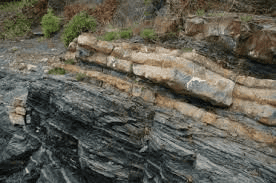
Why in News?
A recent investigation by scientists from the Birbal Sahni Institution of Palaeosciences in Lucknow (BSIP) revealed a noteworthy potential for shale gas generation in the eastern South Karanpura coalfield located in the Ramgarh district of Jharkhand.
About Shale Gas:
- Shale gas is a type of natural gas that exists within shale formations, where it is confined in tiny pores that are either microscopic or submicroscopic.
- This natural gas is composed of various hydrocarbon gases that arise from the breakdown of organic materials, including both plant and animal remains.
- Typically, shale gas contains 70 to 90 percent methane (CH4), which is the primary hydrocarbon that exploration companies seek.
Extraction Process:
- The extraction of shale gas is commonly performed through a technique known as hydraulic fracturing, often referred to as fracking.
- In this process, deep wells are drilled into the shale rock, followed by horizontal drilling to access more extensive areas of gas, since shale deposits are generally spread out horizontally.
- Fracking fluids, which consist of sand, water, and various chemicals, are injected at high pressure into the drilled holes to create fractures in the rock, which allows the trapped gas to escape into collection wells.
- Once collected, the gas is transported through pipelines for commercial use.
India's Shale Gas Reserves:
- India possesses substantial reserves of shale gas and oil, with several sedimentary basins identified as promising for shale oil and gas exploration, including:
- Cambay Basin
- Gondwana Basin
- KG Basin
- Cauvery Basin
- Indo-Gangetic Basin
- Assam & Assam-Arakan Basin
Applications of Shale Gas:
- This type of gas is primarily utilized for generating electricity and is also used in domestic heating and cooking.
GS3/Science and Technology
Synthetic Medical Images
Source: The Hindu
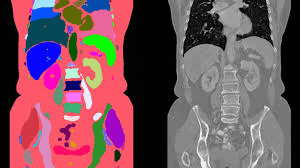
Why in News?
The rise of AI-generated synthetic medical images can provide an ethical, scalable, and cost-effective solution to the medical field.
About Synthetic Medical Image:
- Synthetic medical images are created by AI or computer algorithms rather than through traditional imaging methods like MRI, CT scans, or X-rays.
- These images are generated entirely through mathematical models or AI techniques, including Generative Adversarial Networks (GANs), diffusion models, and autoencoders.
- In the context of medicine, synthetic images are produced similarly, where AI generates new medical scans or radiological images that closely resemble actual ones without using real patient data.
How are these images created?
- A Variational Autoencoder (VAE) processes an image by compressing it into a simplified form known as the latent space, and then reconstructs the original image from this compressed version.
- This process continually refines the image by minimizing the discrepancies between the real image and its reconstructed counterpart.
- GANs consist of a generator that fabricates synthetic images from random inputs and a discriminator that evaluates whether the images are real or artificial.
- Both components enhance their capabilities through a competitive process—the generator strives to create more realistic images, while the discriminator improves at identifying fakes.
- Diffusion models start with random noise and progressively convert it into a realistic image through a series of steps, gradually transforming the noise into an image similar to those it was trained on.
- These techniques are utilized to generate synthetic images across various domains, including healthcare and research.
Advantages
- Facilitates intra- and inter-modality translation.
- Intramodality translation: This involves generating synthetic images within the same imaging modality, such as enhancing or reconstructing MRI scans using other MRI data.
- Inter-modality translation: This refers to generating synthetic images by converting data from one imaging modality to another, like creating CT scans from MRI data.
- Enhances privacy protection: Since these images are created without utilizing patient data, they help avoid privacy issues, enabling researchers and healthcare providers to collaborate on AI developments without breaching patient confidentiality.
- Cost-effective: Synthetic medical images reduce the time and expenses associated with gathering actual medical data.
GS3/Environment
What is Aurora Borealis?
Source: Forbes

Why in News?
The night sky was recently brightened by the northern lights, known as aurora borealis, which were visible in various locations including the United States, Canada, the United Kingdom, Germany, and even in Hanle village in Ladakh.
What are Auroras?
- An aurora is a spectacular natural light phenomenon that occurs in the Earth's sky, primarily observed in high-latitude areas, near the Arctic and Antarctic regions.
- Auroras result from the interaction between energetic particles, specifically electrons and protons, from the solar wind and the atoms present in the upper atmosphere.
- These interactions create stunning visual displays characterized by dynamic patterns of light, which may appear as curtains, rays, spirals, or flickering across the sky.
- Commonly referred to as the northern lights (aurora borealis) in the northern hemisphere and southern lights (aurora australis) in the southern hemisphere.
What is the Aurora Borealis?
- Commonly known as the Northern Lights, the aurora borealis is predominantly observed in the northern hemisphere, especially in regions close to the Arctic Circle.
- This includes countries such as Norway, Sweden, Finland, Iceland, Canada, and Alaska.
- The phenomenon arises when charged particles emitted by the sun, mainly electrons and protons, collide with the Earth's magnetosphere and interact with atmospheric gases.
- These collisions create vibrant displays of light, which are primarily seen in hues of green, red, and purple.
- The vivid colors of the aurora borealis are influenced by the specific chemical composition of the Earth's atmosphere.
GS3/Environment
Komodo Dragon
Source: Nature

Why in News?
The Indonesian government is planning to implement partial closures of Komodo National Park in 2025. This decision aims to alleviate the pressure stemming from the increasing influx of tourists attracted to the park's distinctive ecosystem.
About Komodo Dragon:
- It is recognized as the largest living lizard species.
- Scientific Name: Varanus komodoensis.
- It belongs to the monitor lizard group within the family Varanidae.
- This species is native to Komodo Island and several adjacent islands in the Lesser Sunda archipelago of Indonesia.
Features:
- The Komodo dragon can grow up to 3 meters (10 feet) in length and can weigh approximately 135 kg (around 300 pounds).
- Its tongue is yellow and forked, which aids in its sense of smell.
- Adult Komodo dragons typically exhibit a uniform stone-like coloration with prominent, large scales, while younger individuals may show brighter colors and patterns.
- While most offspring are produced through sexual reproduction, females isolated from males can reproduce via parthenogenesis, a form of asexual reproduction.
- They are infamous for their venomous bites, which contain toxins that can lead to significant blood loss and shock in their prey.
- These lizards can move quickly and have been known to attack and even kill humans.
- The average lifespan of a Komodo dragon is around 30 years.
Conservation Status:
- According to the IUCN Red List, the Komodo dragon is classified as Endangered.
GS2/International Relations
What is United Nations Interim Force in Lebanon (UNIFIL)?
Source: The Hindu

Why in News?
Israeli forces launched an attack on the headquarters of the United Nations Interim Force in Lebanon (UNIFIL) in southern Lebanon recently.
About United Nations Interim Force in Lebanon (UNIFIL):
- UNIFIL is a peacekeeping mission established by the UN Security Council in March 1978, following Israel's initial invasion of Lebanon, which marked the beginning of the South Lebanon Conflict.
- The primary objective of UNIFIL is to oversee the withdrawal of Israeli forces from Lebanon and to help restore peace and security in the region.
- After the 2006 conflict between Hezbollah and Israel, which resulted in the deaths of approximately 1,100 Lebanese, UNIFIL's mission was enhanced to include monitoring the ceasefire and assisting the Lebanese armed forces in southern Lebanon.
- UNIFIL comprises about 10,500 peacekeepers from 48 different countries, with Indonesia providing the largest contingent. Other significant contributors include Italy, India, Nepal, and China.
- Funding for UNIFIL comes from a distinct account that is approved annually by the UN General Assembly, and it is integrated within the broader UN Peacekeeping framework.
- UNIFIL's operational rules permit the use of force strictly for self-defense or as required to fulfill its mandated responsibilities.
GS2/Governance
Tele MANAS
Source: The Hindu
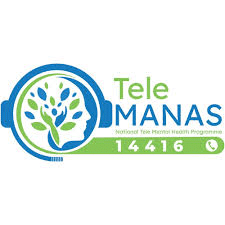
Why in News?
Tele MANAS is now available as a comprehensive mobile platform – Tele MANAS App – developed for the public.
About Tele MANAS:
- Tele Mental Health Assistance and Networking Across States (Tele MANAS) was initiated by the Ministry of Health and Family Welfare in 2022.
- This initiative aims to provide a comprehensive, integrated, and inclusive 24/7 tele-mental health service.
- The primary objective is to offer free tele-mental health support throughout India, especially targeting individuals in remote or underserved regions.
- Tele MANAS is structured in a two-tier system:
- Tier 1 consists of state Tele MANAS cells, which include trained counselors and mental health specialists.
- Tier 2 includes specialists from the District Mental Health Programme (DMHP) or Medical College resources for physical consultations and/or e-Sanjeevani for audio-visual consultations.
- Currently, there are 51 operational Tele MANAS cells across all 36 States and Union Territories, providing services in 20 different languages.
- This year, a new feature was added that allows video consultations, enabling mental health professionals to conduct follow-up calls for further information as part of the assessment process.
Key facts about Tele MANAS App:
- The app is part of the National Tele Mental Health Programme of India.
- It includes a resource library with information on self-care, identifying distress signals, and managing early signs of stress, anxiety, and emotional difficulties.
- This mobile application facilitates users in connecting with trained mental health professionals for free, offering confidential support available 24/7 for immediate counseling.
GS2/Governance
National Commission for Protection of Child Rights (NCPCR)
Source: Indian Express
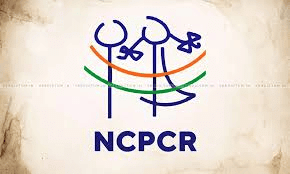
Why in news?
The National Commission for Protection of Child Rights (NCPCR) has expressed significant concerns regarding the operations of madrassas and has called for a halt to state funding unless these institutions adhere to the Right to Education Act.
About
The NCPCR is an Indian statutory body that was established in 2007 under the Commission for Protection of Child Rights Act, 2005. It operates under the Union Ministry of Women and Child Development (WCD). The NCPCR's primary objective is to ensure that all laws, policies, programs, and administrative systems align with the rights of children (ages 0-18) as outlined in the Indian Constitution and the UN Convention on the Rights of the Child (CRC), to which India became a signatory in 1992. This international treaty obliges signatory states to take all necessary measures to safeguard the rights of children as detailed in the convention.
The Commission aims for a rights-based approach that influences national, state, and local policies and programs to promote:
- Child well-being
- Strong institutional frameworks
- Respect for local governance and community-level decentralization
- Increased social awareness regarding child rights
Functions and Responsibilities of NCPCR:
- Functions:
- Review and evaluate current safeguards for child rights and suggest improvements for effective implementation.
- Prepare annual reports on the effectiveness of these safeguards for the central government.
- Investigate child rights violations and recommend legal actions where appropriate.
- Encourage research in the area of child rights.
- Increase awareness of child rights and available protections through various channels, including publications, media, and seminars.
- Inspect facilities where children are held or reside, such as juvenile homes, and suggest remedial measures as needed.
- Address complaints and take proactive measures regarding child rights violations and the non-implementation of protective laws.
- Responsibilities:
- Under the Right of Children to Free and Compulsory Education (RTE) Act 2009, NCPCR is tasked with examining and recommending measures to ensure the rights provided under the Act are upheld.
- Under the Protection of Children from Sexual Offences (POCSO) Act 2012, it monitors the establishment of Special Courts by state governments and the formulation of guidelines mandated by the Act.
- NCPCR oversees Child Care Institutions (CCIs) under the Juvenile Justice (Care and Protection of Children) Act 2015 and was directed by the Supreme Court to perform a social audit of these institutions.
NCPCR's Recommendations on Madrasas:
Allegations against madrassas include:
- While Articles 29 and 30 of the Constitution provide for minority rights, children in madrassas often lack access to quality education as guaranteed by the RTE Act.
- Concerns have been raised about inappropriate content in religious texts and insufficiently qualified educators.
- Madrasas reportedly do not provide essential amenities and benefits available in standard schools, such as uniforms and midday meals.
Key recommendations made by NCPCR include:
- The recommendations follow a High Court ruling that deemed the UP Board of Madrasa Education Act unconstitutional, citing breaches of secularism and fundamental rights under Article 14 of the Constitution.
- The NCPCR has communicated to the chief secretaries of all states and Union Territories suggesting:
- The closure of madrasa boards due to their lack of accountability and transparency.
- The withdrawal of state funding to madrassas unless they comply with the RTE.
- In its report titled 'Guardians of Faith or Oppressors of Rights?', NCPCR has recommended:
- The removal of non-Muslim children from madrassas, as their presence violates Article 28 of the Constitution, which prohibits the imposition of religious education without parental consent.
Political reaction to the NCPCR’s recommendations:
Some opposition parties have claimed that the NCPCR's suggestions seem politically motivated, potentially exacerbating social divisions.
Way Ahead:
The discussions surrounding the NCPCR's recommendations highlight a crucial intersection of education, minority rights, and governance in India. As this debate progresses, stakeholders emphasize the necessity for a balanced approach that ensures quality education for all children while honoring diverse cultural contexts. To achieve this, the NCPCR advocates for the coexistence of both religious and formal education, but not within the same institution.
|
38 videos|5288 docs|1117 tests
|
FAQs on UPSC Daily Current Affairs: 13th October 2024 - Current Affairs & Hindu Analysis: Daily, Weekly & Monthly
| 1. What are the main advancements in technology that are impacting protein studies? |  |
| 2. How does synthetic biology contribute to protein research? |  |
| 3. In what ways have computational methods transformed protein studies? |  |
| 4. What is the significance of protein folding in biological processes? |  |
| 5. How does the integration of artificial intelligence enhance protein research? |  |





















